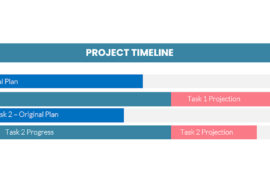 I had the privilege of speaking to a group of project managers recently and the hot topic of the evening was the trend towards new “collaborative” project management tools. It’s true that “Collaboration” has become the latest buzzword in a sea of project management software vendors as they try to distinguish their products from amongst all the others.
I had the privilege of speaking to a group of project managers recently and the hot topic of the evening was the trend towards new “collaborative” project management tools. It’s true that “Collaboration” has become the latest buzzword in a sea of project management software vendors as they try to distinguish their products from amongst all the others.
Collaborative project management – it sounds like a great new process. After all, who could possibly argue against a collaborative process? The answer, of course, is no one. Project management by its very nature is a collaborative process. I’d sure like to see some pm software that is non-collaborative. If you’re not collaborating with someone, then you’re probably not doing much project management. Nonetheless, collaborative project management software is all the rage and from my many visits into the head offices of corporate culture I can understand why.
There is an almost universal problem I encounter when talking about project management; a problem to which almost all executives I come into contact with are intent of finding a solution for. The universal desire is for a cross-project, enterprise-wide resource capacity planning system. At one time this kind of functionality was not critical in a project management system. Project management software as usually applied only to a mega project where enterprise project management meant managing one project only. On mega projects, resources are often considered to have unlimited availability. Schedule is the critical factor. There are still pm environments like this but they are much rarer than they once were.
The most common project environment today involves many projects, all competing for a small number of highly skilled resources. Line managers, department managers or resource managers often control those resources. The projects themselves are managed by project managers who must assemble their project teams in an environment where they must compete against other project managers vying for the same people. This is the classic matrix environment and it is as common as can be in business today.
The structural tension between the needs of managing the employees and the needs of the projects to get completed is supposed to deliver a compromise which affords the best to everyone but it doesn’t always work out.
The problem is the human factor which is rarely considered when creating such an environment.
This week I had occasion to see this in action at one of our country’s larger telecommunications companies. (No, I won’t embarrass them by saying who it is.) I had been called in because management at this firm had determined that it had no visibility over the capacity of the organization to take on new projects and to model the impact of new initiatives as they occurred. It’s not a new request; I get it several times a week so I was well prepared to discuss the problem. I met with a selection committee who had been given a mandate to find a software solution to the problem. Would I update them, they asked on the ability of different collaborative project management software systems to perform multi-project resource analysis, capacity planning and what-if modeling ? Of course I would but my first question was to how they were operating now. Oh no, I was told, the existing system was completely insufficient for their needs. Well that wasn’t my question. It took some teasing (it always does) but finally they confessed that although multiple project management systems were in place, no two project managers worked together.
For those of you thinking I must be speaking about you organization, take heart. The good news is you’re not alone. The bad news? You have plenty of company.
This scenario is amazingly common. It’s true that my sample of data is badly skewed since the people who call me mostly have a problem they are trying to solve. Those who have great solutions don’t seem to look for my advice. Still, what amazes me is how a group of what seem like highly intelligent people can have the notion that the implementation of software will make project managers collaborate.
For this organization who seems intent on breaking out of the mold that they’re in, there is certainly hope but my comments to them involved very little talk about how features worked and a lot of conversation about how they will need to change the culture if they are to have any hope of success.
“Can’t we just have a multi-project resource leveling?” they asked. “Sure,” I said. “Please point to the person who will be setting the project priorities so that projects can be analyzed together without making a low-priority maintenance project get resources ahead of a company-critical development project.”
Hands were slow to rise. I can understand why. This will not be a job to be envied the first day that someone’s project has resources removed from it so that a higher priority project can move forward. Would someone be ready to sacrifice the productivity of their own project for the greater good of the organization? Would they give access to the resource records under their control with the risk that they be co-opted by someone else?
There was, I think, some misguided hope that the software would tackle that decision for them.
The great Diaspora of computing that started with the PC is coming back to haunt us. We’ve all become a little spoiled at managing our own data in our own world. The advent of centralized networked data is pushing some of back together in functions like project management. With the Internet making the technology of sharing data easier and web-based architecture pushing data back into a centrally managed source (onto a client-server database instead of in Excel on my hard disk), some of us are being asked to share; something we haven’t really had to do for a long time. Our notion of sharing has been coloured by an entire generation of PC users who say “well you share everything you’ve got with me and I’ll think about whether or not to share anything with you.” Centralized project management doesn’t work that way. It’s true that technology now provides us the opportunity to automate a collaborative project management practice but is our do-it-yourself generation ready to truly share? It was something I threw out to this group of project managers at the telecommunications company.
There is no doubt that everyone in the room desired a solution but I challenged them to deal with the corporate culture that caused the problem. Would they be able to collaborate given the chance? The jury is out.




